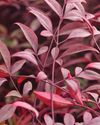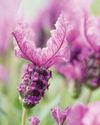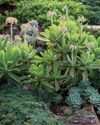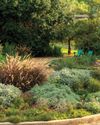Heritage plants like proteas, pincushions, blushing brides and cone bushes are common sights in garden centres nowadays, so there’s no excuse for not planting some of your own.

In natural conditions the members of the Proteaceae family grow in poor, well-draining soil with a low, slightly acidic pH of between 5 and 6. The plants prefer hot, dry summers and cold, wet winters, but many will grow well in summer-rainfall areas too.
Soil
Bad drainage is a recipe for disaster, although some species and cultivars are more tolerant of heavy soil than others. Prepare the soil well by mixing in well-decomposed compost that is low in phosphates. Simply filling the planting hole with compost is not a good idea as this only forms a reservoir for water to stand in, which will increase the chances of root rot. Slightly raised beds or mounding of heavy soil will improve drainage, and so will adding a little gypsum to break up the clay when preparing a planting place. Some outlets stock a specialised protea soil mix that can be used if there is any doubt about your garden soil’s suitability. You can also grow all of these plants in large containers.
Position
All fynbos plants need full sun to flower. If proteas, blushing brides (Serruria) and pincushions (Leucospermum) are planted in the shade or semi-shade they will struggle to flower, and cone bushes (Leucadendron) will not produce their brilliantly coloured foliage.
Watering
This story is from the {{IssueName}} edition of {{MagazineName}}.
Start your 7-day Magzter GOLD free trial to access thousands of curated premium stories, and 9,000+ magazines and newspapers.
Already a subscriber ? Sign In
This story is from the {{IssueName}} edition of {{MagazineName}}.
Start your 7-day Magzter GOLD free trial to access thousands of curated premium stories, and 9,000+ magazines and newspapers.
Already a subscriber? Sign In

FIRE AND Feathers!
On a dreary winter's day, a screen of fiery and feathery leaves puts up a fight against dullness!

GET THE ladies in!
At this time of year, early-flowering shrubs vie with each other to get the most attention. We say: Trust those with female names for frills and butterflies. They go the extra mile to flower their hearts out.

Vegetable Soups and dumplings
Vegetables make the most delicious soups and classic combinations are always a winner.

Yummy sweet potatoes for your good health
Boiled, baked or braaied, sweet potatoes (Ipomoea batatas) are a delicious and healthy winter comfort food. Just a dollop of butter, a little seasoning and you are good to go.

Pretty and functional
If cooking is your main thing, you would probably be more interested in the culinary value of the three herbs and some of their varieties we are describing.

Dried Seedheads & Pods
Autumn and winter are the best times to see what flowers produce the best seedheads that can be left on the plants to feed the birds and bugs and for harvesting for dried arrangements.

SO MANY FACES and so many choices...
Whoever associated a Cotyledon orbiculata (pig's ear) with the ear of a pig obviously did not know about all the varieties and cultivars this species in the genus Cotyledon has.

COLOURFUL Cold Weather WINNERS!
If it comes to a vote, these dependable shrubs will be the top candidates for prime performance in winter and in other seasons...

What makes a garden sustainable?
It is interesting to note that the United Nations defines sustainable development as: “development that meets the needs of the present without compromising the ability of future generations to meet their own needs”.

Nurturing NATURE-The Story of Kraal Garden's Transformation
Nestled within Prince Albert's rustic embrace lies a gem that is a testament to the transformative power of human vision and nature's bounty.